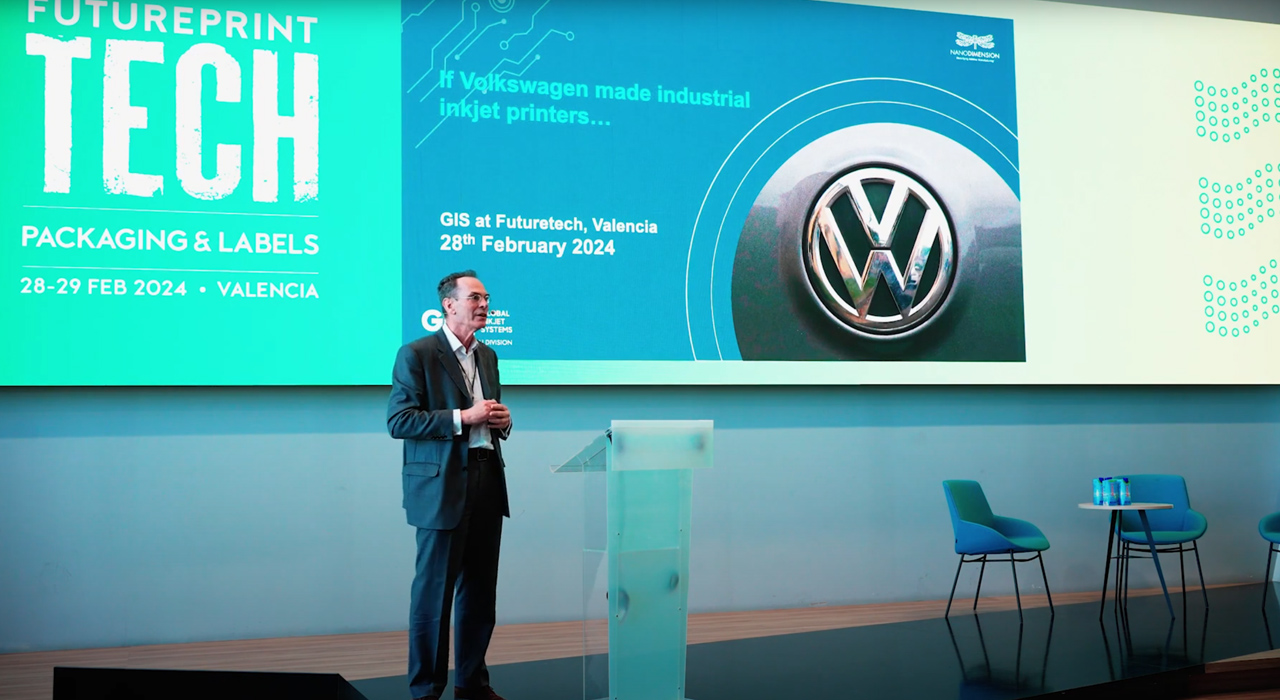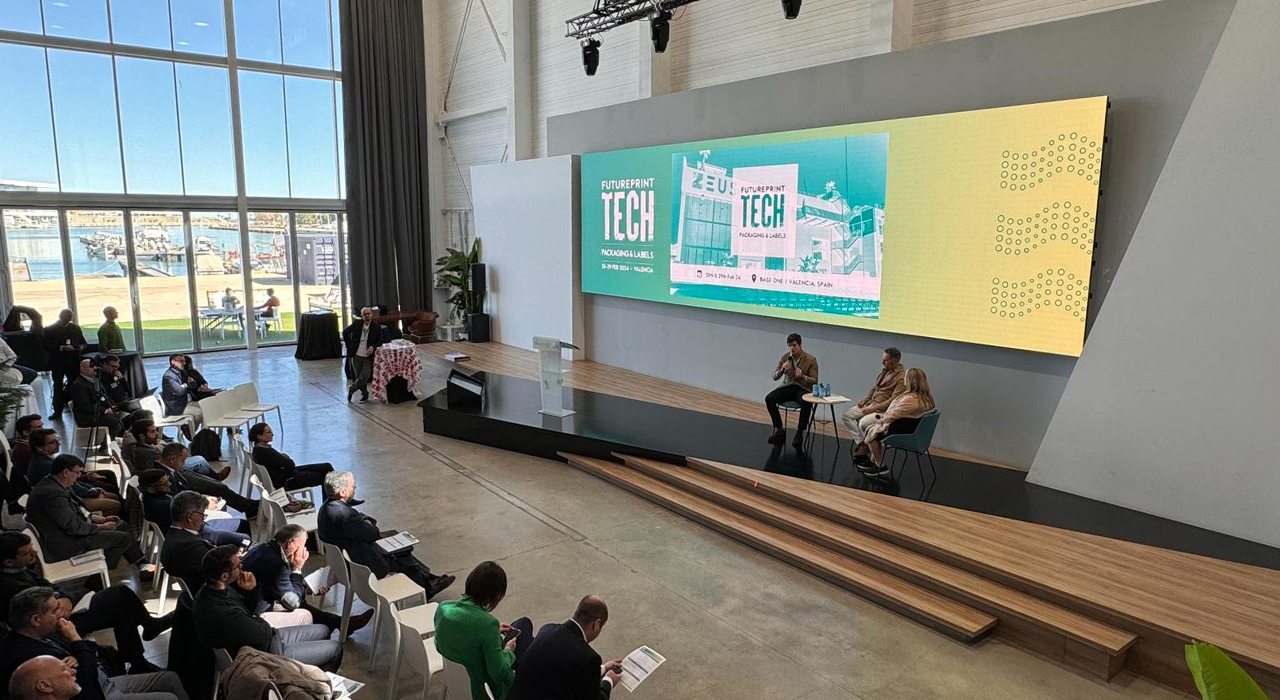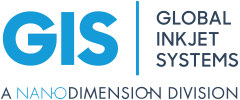GIS Challenges the Digital Assumptions in Packaging
As digital print continues its encroachment into packaging supply chains, many assume that innovation in hardware alone will drive adoption. But at the 2025 FuturePrint Tech conference, Packaging, Labels & DTS, in Valencia, Richard Darling of GIS—a division of Nano Dimension—offered a different narrative. His argument was neither bullish nor dismissive but was forensic: the real obstacle to digital direct-to-shape (DTS) printing in packaging isn’t the printer, it’s everything else.
GIS has spent over 15 years developing systems for inkjet applications, working with major printhead manufacturers and OEMs to deliver digital solutions across packaging, labels, and DTS markets. What it has learned, Darling said, is that digital only works when there is both economic rationale and structural fit. In too many cases, one or both are lacking.

The Economics of Change
GIS is a rapidly growing company, headquartered in Cambridge, UK. We are a leading developer of high-performance software, ink delivery systems, and printhead drive electronics for industrial print systems.
As a division of Nano Dimension, we are playing our part in changing the way the world manufactures, and we’re supported by a global network of sales, support, marketing, and engineering teams crossing Europe, Israel, the Americas, and Asia Pacific.
We aim to provide a stimulating and rewarding work environment. We are growing and succeeding, and our culture is lively with a focus on team spirit – with great coffee, an active social committee – and more!
More Than Just Ink Price
Darling emphasised that the calculus of DTS adoption extends far beyond ink cost or image quality. While digital label printing now accounts for 7.2% of the label market—up from near zero a decade ago—DTS has yet to show similar traction. He highlighted that inkjet ink can be up to ten times the cost of analogue inks, and that perceptions that printheads may be consumables may present ongoing cost and reliability risks.
Yet, for many brands, the true costs and benefits lie elsewhere: inventory reduction, reduced work-in-progress, responsiveness to promotional cycles, and messaging agility. These benefits remain difficult to quantify and realise, particularly within the narrow KPIs typically monitored in large production environments.

The Misalignment of Scale
DTS printing, Darling argued, is often promoted with “digital analogic” thinking—the idea that digital systems can simply replace analogue ones, slotting into existing workflows. But that assumption is flawed. Traditional operations are centralised and volume-driven, designed to minimise variation. Inserting digital into that context—without broader changes to logistics, operations, supply chain planning, as well as marketing, rarely yields success.
Instead, GIS sees more promise at the opposite end of the spectrum: small-batch production, late-stage customisation, and local fulfilment. A shampoo bottle may sit in a home for weeks, a beer can for minutes—both represent untapped media. The opportunity, Darling suggested, is not simply in printing packaging, but in using packaging as a platform: a new kind of hard-copy publishing. Augmented reality, variable design, and cloud-linked QR systems can turn a package into a communications tool—potentially reclaiming some of the cultural territory lost by print in publishing and broadcast.
The Scale of the Opportunity—and the Caution
The figures are large: 450 billion beverage cans, 580 billion PET bottles, and 50 billion plastic tubes produced annually. Growth continues at 5–6% CAGR, with over 4,000 high-speed filling lines operating globally. Yet, despite high levels of interest, few brand owners have really committed to DTS inkjet. The reasons range from capital cost and reliability concerns to uncertainty over return on investment. Crucially, brands are not print equipment operators, and current systems often demand a level of technical oversight that conflicts with standard operations.
Darling did not claim to have a panacea. Instead, he called for realistic deployment strategies: Systems that are lower-cost, flexible, and capable of operating closer to the consumer. Rather than chasing throughput parity with analogue, digital systems may find their strength in the spaces analogue cannot reach—low volume, high value, rapid turnaround – refreshing the parts that other beers cannot reach?.
In the final analysis, digital print in packaging cannot be judged on press specifications alone. What matters is the orchestration of production, messaging, supply chain and consumer behaviour. Print, in Darling’s view, is only one node in a much larger network. The question is not just whether DTS can be made fast or affordable. It is whether the system around it can be made intelligent enough to exploit and justify its presence.

